|
I got up early the other day and went back north to Maine to visit family. We hadn't been for a while and the personal landscape has changed a bit. Still, it was nice to be home. We only had so much time for a tour of various households. Some relations--like my mom--had moved since we were there last. Others were right where we left them. It was all good. So much in life can feel unstable these days. Everyone I know, it seems, is in transition. Seeing people who you have known forever reminds you that while the trappings are altered somewhat, you still have a place, even if it is more relational than physical these days. I may not have spent a huge amount of time in some of these spaces...but my people are there. This relational feeling is not unlike the one I get from being outside. There is plenty that doesn't quite fit each time, but, still, one is locked into an extended network where a place for humanity--and for individual humans--still exists. Lately it has been hard to get outdoors. It will be for a while longer. Weather, time, work, and the desire to be with family currently create a number of barriers that are hard to overcome. Oh well...it will happen...eventually. Until then there is preparation and staying in shape. One aspect of preparation involves going through my backpacks and taking a look at all the gear I have for hiking. Some of it needs to be cleaned. There are a couple items I wonder if I really need. There are a few that must be replaced. Whenever I get back out it would be best to have the right stuff. Staying in shape, on the other hand, means getting back to the gym and slowly heading back out into the winter world... 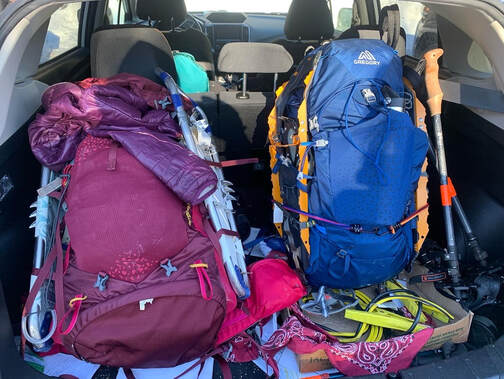 Two Gregory Packs in their full glory on the coldest hike of our year up Mount Liberty. You can see some of the extra straps for carrying snowshoes and other gear. Mine is the blue one. Al's is one size up. Two Gregory Packs in their full glory on the coldest hike of our year up Mount Liberty. You can see some of the extra straps for carrying snowshoes and other gear. Mine is the blue one. Al's is one size up. For the next year-end list I have five pieces of kit that I was super grateful for. Some of this stuff becomes a part of you on a long walk. Some of it may be or feel a bit more of a burden at times. Some of it never does. Anyway, here they are, in no particular order. Backpacks: OK... Maybe there is a bit of an order. You aren't going to get far without a good pack. I actually have four. One--a 40 liter Osprey--is really my travel bag but those straps are super-helpful for pushing through train stations and airports. Another is a 20 liter day pack from LL Bean that folds up super-small. Before my back injury, that was my go to day pack. Post-surgery, everything must have a frame now. I still make use of it. I just take it to the gym. With that out of the way, my current hiking kit includes the remaining two bags. I switch them out seasonally. That said, the seasons aren't even and there are times when I need to carry more stuff than a basic day pack can handle. Usually this means I defer to my "winter"--and most of spring and late fall--pack; the Gregory Zulu 40. A 40 liter pack isn't actually that large. It wouldn't get you much farther than an overnight, but--considering how I hike--this one has fit the bill for a couple years. You need a big pack when it starts to get cold. I found that this year, for example, I had to put my smaller bag away in mid-September. Over the course of our partnership, I have added some after-market straps and usually carry a couple bungee cords. There are always extras, like sandals, wet socks, or snowshoes that need to hang outside. The Gregory has a couple years on it. This year, however, I also got a summer pack for our hike across Scotland. We were staying in B&B's so there was no need for the extra camping capacity. Also--concerned about the longer days and what the weight would do to us--we planned to carry mostly water and one extra layer. For this purpose I used the Osprey Talon 22. At 22 liters it was close to half the capacity of the Gregory. It turned out I could carry quite a bit more than I thought, so I took advantage of the space. There is a partial list of my daily payload in the wrap up--linked in this paragraph--from that trip. However, it is still a slightly lighter frame pack that kept me honest about what to bring. It is best for either when hikes are in fair weather and close to resources or straight up during the summer months. 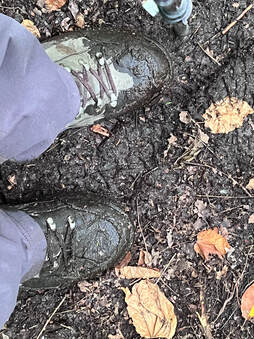 Wet day coming down the Horn...dry feet. Wet day coming down the Horn...dry feet. Boots: OK, this is a simple one. Boots are a personal decision based on the shape and size of individual feet. I used two pairs this year with mixed success. I made a mistake in my selection of boots for the Scotland hike. I thought something with a softer sole would help with the hard roads. It did...but the boot was less breathable which was a problem during Global Warming Summer. I would have been better off with something more durable or more breathable. I will not dwell on that. You can check out the post I linked in the last section. The good news is that my other pair are Lowas. I like them very much, though they did need inserts. They are all leather which somehow made them more breathable. Also, they kept me dry under some hideously damp circumstances. Once your feet are wet there is no happiness. I dread having to replace these boots as they have been downright perfect for my needs. Hopefully they are perfect next time as well. Boots are expensive... 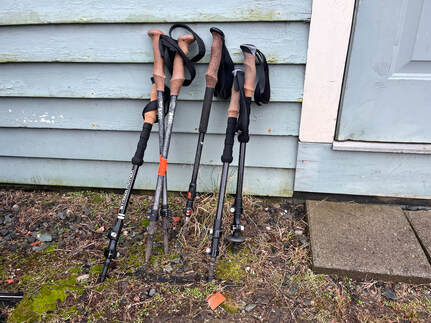 Here is an assortment of poles, mostly from REI or Hiker Hunger. There is a beat up one that journeyed on the AT with a thru-hiker but couldn't be taken on the plane. Note the cork handles--to keep your hands dry--and the basic looking clamps for adjusting height. Here is an assortment of poles, mostly from REI or Hiker Hunger. There is a beat up one that journeyed on the AT with a thru-hiker but couldn't be taken on the plane. Note the cork handles--to keep your hands dry--and the basic looking clamps for adjusting height. Hiking Poles: Here is a piece of equipment that I didn't expect to rely on as much as I did. Boy, do they make a difference! I was using these a bit even before my back injury. Now I rarely take a hike of any consequence without them. My suggestion is to always use two. That will help to balance you out. I use them both for ups and downs. Some do one or the other. Either way, they take pressure from your knees and make your arms work a bit harder. This is all to the good. Most hiking poles work just fine. Do yourself a favor, though and skip thinking about using ski poles. They are not the same! Hiking poles are adjustable and built for taking a ton of weight for a longer time. These days my go-to poles are from Hiker Hunger. I like the carbon fiber. This is partly just because they are a tad lighter, more durable, and take the shock a bit better. I broke a metal pole by landing on it. That also may have biased me. There are slight variations in design to think about if you want to. I prefer cork handles and a simple clamp for adjusting height. There are some which have sleeker looking mechanisms where you twist an invisible squeeze thing. They look sleeker, but the mechanics on the inside are impossible to repair and more likely to break. With most hiking equipment simplicity is a virtue. It should be possible to tighten the clamp at the joints with a phillips head (that you should bring with you if this is the case) or with your fingers (as on the Hiker Hunger models). If you zoom in on the picture above you will see what I am talking about. 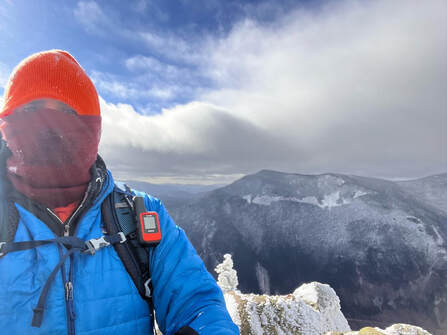 That orange thing that isn't a hat is the Garmin. Bringing that was the wisest thing I did on my solo hike up Jackson and Webster. That orange thing that isn't a hat is the Garmin. Bringing that was the wisest thing I did on my solo hike up Jackson and Webster. Garmin Mini: There isn't a ton to say here. this is a device that connects to a satellite to give you directions and communicate with the outside world. We rarely use it, preferring phone apps like AllTrails and actual physical maps that don't need charging. That said, the Garmin has an SOS function which could be a lifesaver if you get stranded in a spot where your phone doesn't work. Some hikes have few to know dead spots. Others--like those in Baxter State Park--rarely have cell coverage. The Garmin gives us piece of mind that we don't have to use. Al and I have one that we share, because...it is pricey. 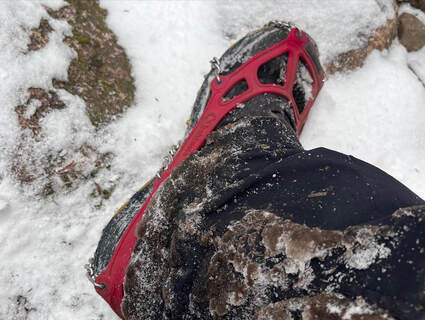 OK...this was pretty wise, too. These are my Kahtoolas on Jackson and Webster. OK...this was pretty wise, too. These are my Kahtoolas on Jackson and Webster. Micro-Spikes: On the hiking socials there are a lot of arguments about which kind to use. Basically, though, they are chains and pointy things with elastic frames that fit over your boots. This time of year they are super-important to have in your bag. We always carry micro-spikes starting in November if we are expecting to climb. For how we hike, they are even more important than snowshoes (also necessary in some situations). Ice can really mess a person up. There are really only two brands that you want to find yourself depending on. They are made either by Kahtoola or by Hillsound. Do NOT try to save money here if you can help it. There are cheaper brands but I, at least, worry about getting stuck somewhere sketchy with nothing more than a pile of broken elastics. For winter hiking one might also want crampons (big spikes) or an ice-ax. Al and I use micro-spikes and just assume we aren't doing hikes that require more than that. We do like to know our limits! Maybe someday we will trade up. That Jackson hike was an eye-opener. It was the first time I missed having an ax. I have also found micro-spikes helpful on shorter trips where there is little ice but quite a bit of packed down snow. That extra traction keeps one from slipping back and wasting energy. Well that is all for now! Obviously there is a lot of other gear one could bring up here. these are just my favorites. Honorable mentions can be given to my trekking towel, the oft-used water purification tablets, snacks, and snowshoes. Maybe I will get to those later, but these are the big ones or 2022...
0 Comments
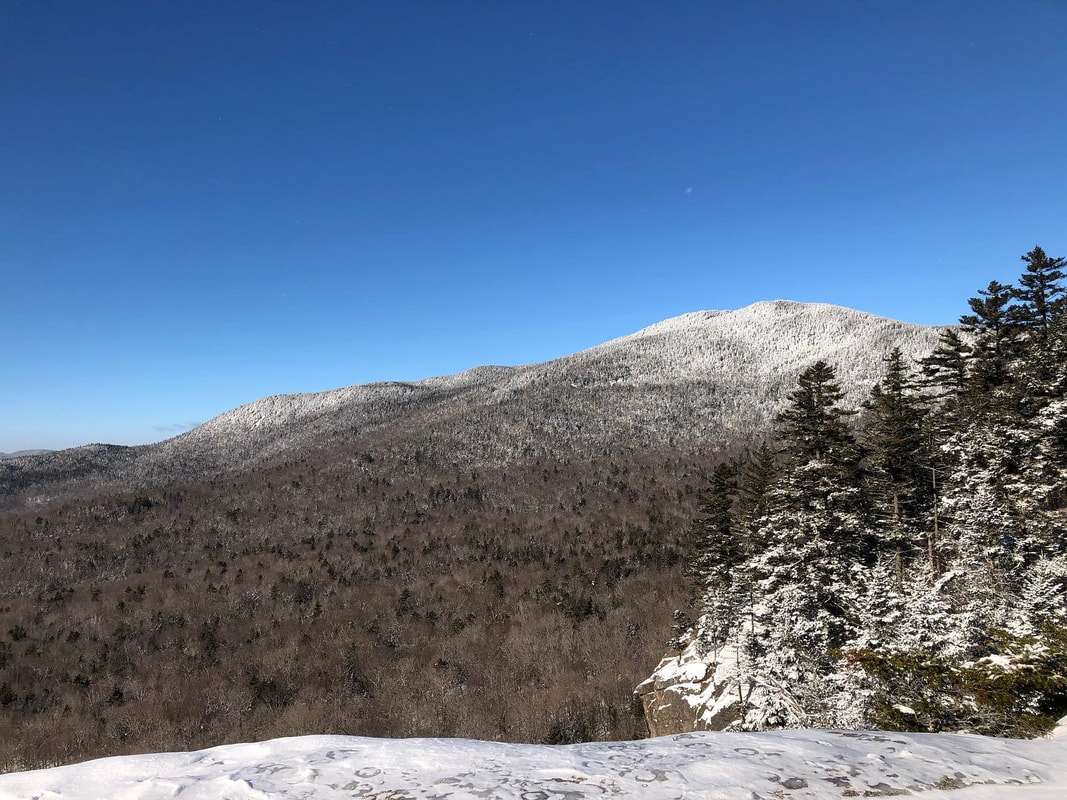 The view off Pemigewasset The view off Pemigewasset The late days of Christmas, right? I hope you are all making it work. The Advent season--frequently referred to colloquially as "Christmastime"-- is peak work for people in my trade. Now it is over. In fact, now it is actual Christmastime and things are slowing down. Theologically in terms of December, Advent is the regular season. The twelve days of Christmas are the playoffs. However, thanks to the cultural tendency toward immediate gratification, the secular world comes screaming out of the gate on December first. The playoffs in this tortured metaphor are more peaceful. I am enjoying that. We visited family and right now we are waiting for a few friends to come over. That is about what we are up for. It is enough. In my last post I wrote about how important it is to keep busy this time of year. The dark of winter can turn into a personal darkness pretty darn quick. To stave that off I am planning my spring garden and making year end lists. You have one about my most-used hiking books of the year. Here is my next one. First, let me pull back the curtain on Sabbath Walks a bit. When I am planning hikes I like to take the usual things into account--time, weather, challenge, views and so on--but I also try to consider what the experience of that particular part of the natural world might be trying to say. What can I learn? What kind of questions am I asking? I try to engage with nature mindfully, though it doesn’t always work. Part of that preparation is religious and ritual-based. However, part of it is through study. This list is a product of the study part. I read a lot of books. These are the ones that have spoken to me the most this year...at least on the theme of nature. The first thing I noticed when putting the list together is...it is not a terribly diverse list! I could have curated it a bit and slipped something in, but I am trying to be honest. All I can say is that I see it. I have a number of books in the pipeline for this year that are more varied. These ones are a product of my background and education. I went back to what I know, apparently, which is fine to start but...one can't stay there... Thoreau and Thaxter are old theological and literary companions. I have read and re-read them for years. Burroughs is a new find but from the same era and with similar concerns and interests. Thomas Starr King is a figure from my church and denominational history, but here he is speaking to me as a clergy person who hikes. The one modern is the Scottish poet Hamish MacDonald. Even, he, though, is reaching back to the 19th Century and the work of naturalist Alexander Wilson. Apparently the era speaks to me. Perhaps in the new year I will learn to listen to other voices...or at least that is the plan. Anyway, here they are. They are sort of listed in order but...not really. They are all pretty good. 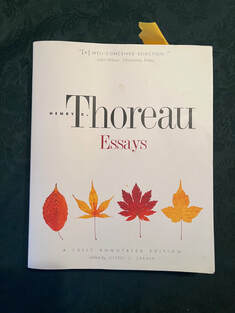 Essays by Henry David Thoreau, Jeffery Cramer ed. Thoreau, of course, is best known for "Walden" and "Civil Disobedience." My favorite of his, however, is "Walking". In this and other works--divorced from the wishful projections of back-to-basics folks whom I also admire--Thoreau reveals himself to be both modern and a keen observer of the natural world. In addition to the above essays, I found "Winter Walking" and "A Walk to Wachusett" to be particularly moving. I like all of them, however. I used this particular collection to teach Transcendentalism to high school aged "unschoolers". Unschooling is a form of self-directed learning that is frequently lumped in with "homeschooling" for legal reasons. The thing to remember is that the scholars have tremendous control of their time. That they read these essays is quite an endorsement! They also found it to be relatively accessible. A big part of it's popularity comes from Cramer's annotations. If you want the full context of the writing, I would encourage you to get this edition and take copious margin notes.  Shiny picture but you get the idea. Shiny picture but you get the idea. An Island Garden by Celia Thaxter Thaxter is an oft-overlooked second generation transcendentalist. An accomplished writer/poet/innkeeper/salonist/gardener, she influenced a large number of artists and thinkers who would visit her inn on Appledore Island, one of the Isles of Shoals in New Hampshire and Maine. That is a pretty rough piece of real estate! Her garden essays are riveting reading if you are interested in how to get the most of your agricultural endeavors in a hostile environment. Her own philosophical inclinations pervade her writing in an engaging way. Her practice of close observation served her well on the tiny islands that help define her work. I have found her essential to understanding how to be mindful when your landscape is circumscribed. 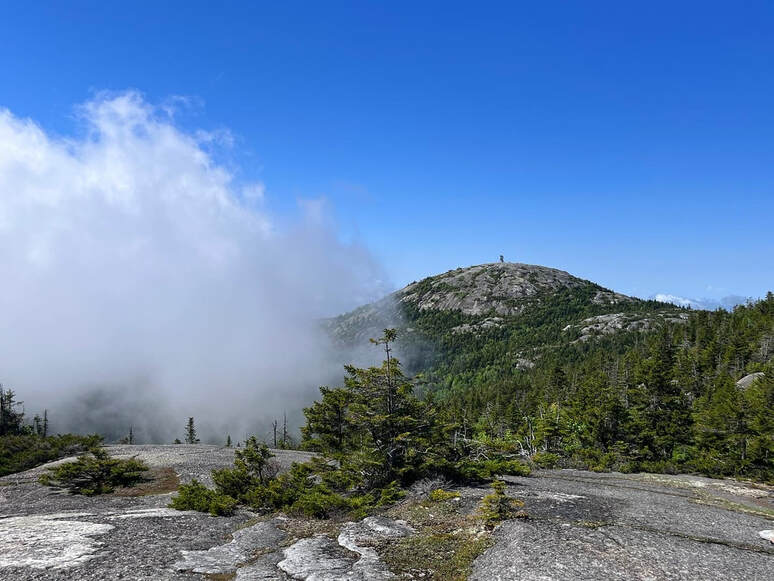 A view of Cardigan from Firescrew, both of which are prettier than a peek at my ipad. A view of Cardigan from Firescrew, both of which are prettier than a peek at my ipad. The White Hills: Their Legends, Landscape, and Poetry by Thomas Starr King I got this for free on googleplay so there isn't a picture of the cover. Free is nice, though, right? Starr King was a Universalist minister who served both Universalist and Unitarian churches. He is more famous for being a Californian, but his life started in the east. At some point he wrote an early book about hiking the White Mountains. Now a 52 WAV mountain is named after him. He has been a good companion in my explorations in that neck of the woods. I do not think he is quite as engaging as Thaxter but he, too, observes the small changes. His gift is universalizing some of his observations. I found his description of the perpetual change of light and color in the mountains to be particularly engaging. It is a topic I examine more in my post about Mount Hedgehog. 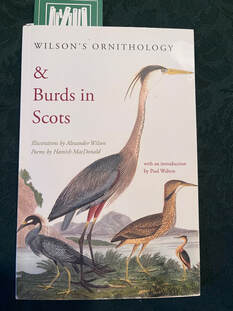 Wilson's Ornithology & Burds in Scots by Hamish MacDonald (Illustrations by Alexander Wilson) I picked up this small volume of poetry in Fort William, Scotland. I was looking for something light to carry daily during our hike of the Great Glen Way. MacDonald's work is set in dialogue with that of Alexander Wilson, a Scottish ornithologist, poet, illustrator and naturalist who is sometimes described as the "Father of American Ornithology". The illustrations in this book are by Wilson. MacDonald's poems are–as the title implies–in Scots so they take a little work, but they fit the bill during the hike and I have found myself going back to them since. 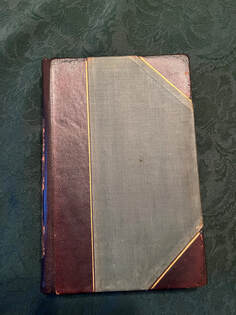 Leaf and Tendril by John Burroughs What is this? Another 19th Century naturalist? Well...yeah. Somehow I got this book. I am not sure how. It is the 13th volume of Burrough's collected works. Burroughs is frequently overlooked. Apparently he sounds like Emerson. Not sure why that is a problem. Anyway, Burroughs is another observer of nature. He wrote most of the essays in this particular collection while sitting in a writing-cabin in the middle of his vineyard. The first essay "The Art of Seeing Things” was particularly helpful as I tried to move from concentrating on achieving the destination--usually the end of some painfully uphill slog--to focussing on the journey and the character of the plants and animals around me. I commenced the second day of Christmas by discovering the Latin and colloquial names of my houseplants. Then I made coffee. Then I went for a walk. On my walk I started to make a plan for surviving the next two months. As you may have gathered from my previous post, I am not at my best in winter. I must find ways to move from one thing to another, to another... There is no reason to delve too deeply into all that again. It is just a fact of life that requires a certain amount of organization. Organization, however, is something I am very bad at. So I have some time between now and Epiphany to figure out an approach. No doubt it will involve being out in nature. There will be hikes, of course. Also, my Christmas gift to myself was a stack of gardening books so I can solidify my gains from last year. I have a tab open with tomato seeds! For part of the season I will be working at a job I usually enjoy. Then--for a little while at the end when I am most despairing--I will be on sabbatical. So much of this time can feel restrictive. Hibernation-brain is right there picking away at our resolve. The trick is not to keep busy for busy-sake but to find ways to be excited about...something, even though it might take a herculean effort to get going. One of the the things I will try to do is make some "top" lists for the new year that I can share with you. It is actually a big help for me and, maybe, you will enjoy it too. The ranking lists for blog posts and such is canonically around "Mount Roberts Day" when I began this project. These ones are more specific to the background of the project. To start, here are the six (6) most influential books I used this year for planning hikes and walks or planning for planning...if that makes sense. Some are trail guides. Some are practical, and one is historical. They have all been consulted before, after, and during hikes. Some of them are quite beaten up now as they have lived for a time in my backpack. I will hopefully deal with more speculative books and maybe even equipment in later lists.... 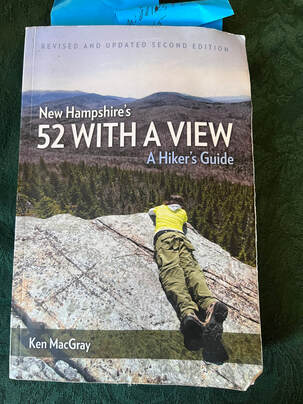 1) New Hampshire's 52 With A View: A Hiker's Guide by Ken MacGray. Ok so I have talked about the New Hampshire and New England "Hiking Lists". They exist elsewhere of course, but I don't so these are the ones I know best. My favorite list is the "52WAV". They range from relatively easy--you do have to be in shape--to rather brutal. Each one, though, comes with a view. The list is subjective. It is curated by a committee and so far their taste in views has been spot on. Ken MacGray is a bit of an insitution. He has worked on a number of other hiking books and runs the Facebook page for the 52 group. His prose is accessible and clear while also being entertaining. Even though I have climbed more 4,000 footers in New Hampshire--the 52's are a bit of a me project right now and I like to hike with people--this is my favorite book and my favorite list. Five stars, buy it. Start with Willard. 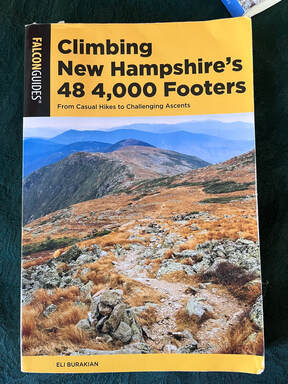 2) Climbing New Hampshire's 48 4,000 Footers by Eli Burakian. Actually there are more that 48 4,000 foot mountains in New Hampshire so--while the 48'ers like to pretend at objectivity--this list is subjective, too. This is the basic book for the task of hiking all those mountains. It contains suggested routes and maps. Maps are a plus, by the way. MacGray's book assumes you have separate maps on you--and you should--but it is nice to have these as well. I have used the routes in the book when planning. Most of the time I have taken the exact route. At other times I have modified my route using another book--in the honorable mentions--and/or those maps. The text is brief and to the point, which I like. 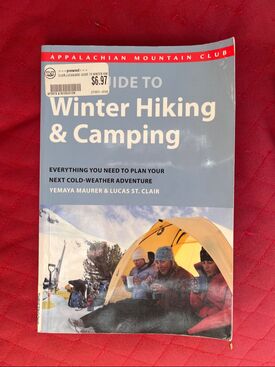 3) Appalachian Mountain Club Guide to Winter Hiking by Yemaya Maurer and Lucas St. Clair. I am in the process of re-reading this book right now. There is a great deal of difference between hiking in winter and hiking the rest of the year. It is imperative that we know at least the basics of what we are doing. I do not camp in winter, but those sections are good to be familiar with as well just in case you find yourself having to be out overnight. The presence of roads into the wilderness sometimes confuses us as to how at risk we are. Just because we can reach the foot of Presidentials in a couple hours does not mean we are strolling on the local rail trail. This book covers the basics that one needs to know to be relatively safe and comfortable in the ice, snow, and dangerously low temperatures. There is some practical philosophy as well. I found the description and use of equipment, tips on reading the weather, and the basics of layering to be the most useful. The authors make you feel like you are part of a team, namely a team of prepared and educated winter hikers. 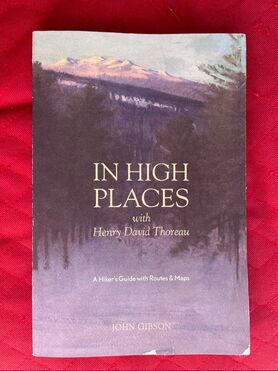 4) In High Places with Henry David Thoreau by John Gibson This is the history book I was telling you about. It also has routes and maps! I am a big fan of Thoreau's writing--he will appear on a different list--and when I have managed to walk in his footsteps I have found this book to be indispensable. However, this is not a general book. The mountains picked are rather niche, thanks to the subject matter. Thoreau--who walked a great deal--needed to have spent some time writing about them in order for them to be included here. However, my readers will note the Thoreau-heavy blog posts for Katahdin, Washington, and Wachusett. I gotta get back out to Greylock, and when I do...this book is coming with me. 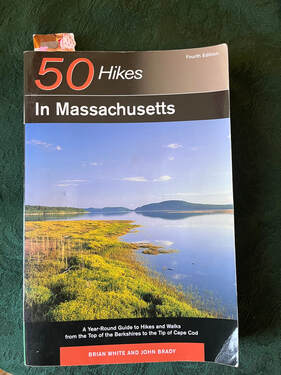 5) 50 Hikes in Massachusetts by Brian White and John Brady Yes, there are hikes right here in the Commonwealth. When I feel like heading out but do not know where to go exactly, this is the book I take. I used it as recently as Thursday when I went to Leominster State Forest. Pretty much any hike in Massachusetts I have taken has been planned using this. It has maps but I often diverge a bit. This has nothing to do with their quality! It has more to do with my confidence with lower elevation hiking. I do, however, plan those alternate routes in advance as well...and I have detailed maps. Spontaneity isn't always a good idea in the wild. Another great thing about this book is that it has many easier hikes. This, alone makes it worth having. Hiking doesn't have to be a toxic race to the highest, most dangerous peak. That is not very sabbath, after all... 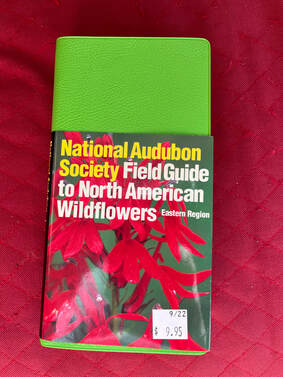 6) Field Guide to North American Wildflowers: Eastern Region by the National Audubon Society I picked this up out of envy. My brother Dan--who features largely in many of my posts--is a wildlife biologist. Hiking with him is a hobbit-like excursion where I follow him around as he identifies birds by their song, animals by their poop, and plants by their leaves, needles, bark, and roots. I wanted to get in to the game myself. What a great way to enhance one's dialogue with nature! Anyway, I love this book. It takes a while to figure it out because it relies on the reader knowing at least the basics off what they are looking at. That said, I have enjoyed it during my sabbath breaks on smaller mountains. If you know anything from my various posts, sermons, and so on, you know that it is that it is OK to enjoy something you aren't good at. Also, I think it is helping me get better.... 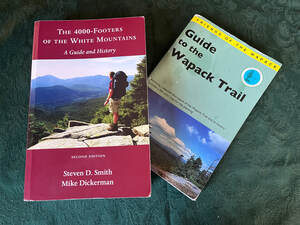 Honorable Mentions: Here are two more that are deserving of note. The first is The 4,000 Footers of the White Mountains: A Guide and History by Steven Smith and Mike Dickerman. This thing is the Bible of the 48'ers. My wife swears by it. When I go off the suggested trail in the Burakian book, I always consult this. It only gets an honorable mention because I don't seem to use it as much. It is dense. There are no helpful maps. However, it has one big advantage that the other book does not; there is a winter description for each mountain. Had I consulted it before hiking Mount Jackson, I might have been more prepared for the icy ledge and the high winds that greeted me. Finally, I wanted to mention the thin book entitled "Guide to the Wapack Trail" by the Friends of the Wapack. I have mentioned this trail before. It begins on Mount Watatic and runs to the Pack Monadnocks straight through some of my favorite landscape in the world. It is a long day hike--21 miles--or can be done in pieces. I would love to take a day and do it this year... Anyway, that is all for now. You got me through my morning! I hope your Christmas is going well... :-) It was winter solstice Wednesday. Solstice is a holiday that flies under the radar in these parts, but not necessarily everywhere. In a way we all celebrate it. It is at the root of all the December holidays. When it does pass unnoticed, it may simply be because it is the rare holiday built on scientific fact. Thanks to the special relationship between the earth and the sun we have a "shortest day". No god in his chariot made this happen. The forces of ecology and personal biology make this a particularly difficult time for may of us. That is the real reason for the parties, the festivals, the light in the dark. Since the birth of the solar system--roughly--there has been the fact of winter. It is a fact that we sometimes grapple with. Often it is a fact that changes and molds us. It deserves a moment of our time, doesn't it? These layers of legend decorating winter solstice, as beautiful as they are, can otherwise obscure a primal element of human existence. The dark comes. So, too, does the cold, the ice, and the famine. Therefore, it is good to find a way to mark the moment when the darkness recedes, even though the winter is just beginning. Doing so helps us to understand our place as part of nature. It also reminds us that the sun--and spring and better days--will also return in their time. For me, this year's observance of solstice came down to two walks. The first of these was on the solstice day, itself. Every year the church hosts some sort of walk to mark the occasion. It is a ritual, but it rests lightly on us. At our most hardcore--a few years ago--we would take a midnight stroll through the outdoor labyrinth at nearby Wellesley College. That was a hearty little group! Since the plague, however, we have erred on the side of--relative--accessibility. Even these days we feel the struggle to gather sometimes. Being outdoors is uncomfortable, but at least we know we can be together. With this in mind, we now hike up Pegan Hill right here in the neighborhood. Instead of midnight we chase the sunset around 4:30. Then we sing carols until it is too dark to see the lyric sheets even with our "vigil candles". Finally we hike down, grab refreshments at a nearby congregants' house, and move on to our own dinners. My job this year was to organize the thing and play the ukulele. The tension is always between formality or informality and we haven't quite figured it out. Is this an earth-centered worship service or a fun carol walk with friends? It is somewhere in the middle, which can make it tricky to plan. It has been a while since I have been up on Pegan Hill in the light of day. It is pretty then, but for me--thanks to these nocturnal gigs--it is usually perpetual twilight. On a clear day or evening one can see the Pack Monadnocks in New Hampshire. This is one of the benefits of Eastern Massachusetts's flatness. Any rise is prominent. At 410 feet, Pegan is the tallest rise in town. The name comes from a faction of the Natick Praying Indians who farmed it. Though the Praying Indians are still around and sometimes worship at our church--built on the spot of their original congregation--we do not know what happened specifically to the Pegan group. I thought of them Wednesday as I do whenever I am up there. There is so much we miss in history and relationships that we can only speculate at now. The human history that this hill represents is complicated. It is important to recognize humanity at its worst so maybe, as the earth turns again, we can do a better job. 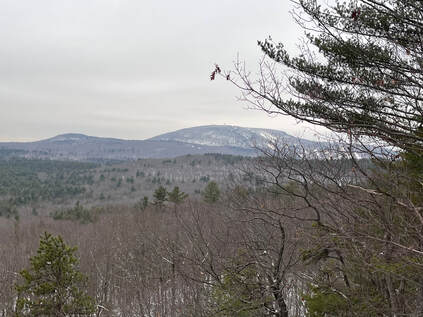 Wachusett from the ledge... Wachusett from the ledge... The second hike was the next day. It ended up being a small, solo celebration of the promise of more light. After my work was mostly done I drove an hour to the Leominster State Forest and climbed up to the Crow Hill Ledges that look out toward Mount Wachusett. There was snow for this one. It felt like winter, which of course was the point...and also a bit of an obstacle. Micro spikes were necessary and some of the rock faces were quite slick. Still, I took my time even though I knew the dark wasn't far away. Of course the extra light on Thursday as compared to Wednesday was not much. It won't be for some time. That said, it was still a hint and a promise. Snow and ice get pretty old pretty fast for me. In a couple of weeks my animal brain will be living for spring. There is nothing I can do about this; just push forward and find joy where I can. I lingered for a while under the massive cliffs, which were more impressive than the view. Then I put my headlamp on and got back to the car in time to grab some food and go play TTRPG's with friends. Then I drove home from Worcester in the rain. 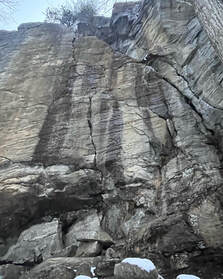 These cliffs were massive. These cliffs were massive. If you want to replicate these hikes, neither is terribly strenuous. Pegan Hill is probably about a mile round trip and--if you don't go exploring down random trails like I did--Crow Hill Ledges is about the same. The footing on Pegan is solid for a suburban hike. There was some sketchy scrambling on the ledges, though. It would be worth considering before heading out. Leominster State Forest--where the ledges are--seems worth exploring. So you can expect more posts from there in the future! I hope you are all having a blessed holiday and you are getting what you want and need from this time. As I write this the power is out and my tasks are becoming unmoored! Oh well, nature has its say apparently. There are things that just won't get done. |
Adam Tierney-EliotI am a full-time pastor in a small, progressive church in Massachusetts. This blog is about the non-church things I do to find spiritual sustenance. Archives
June 2024
Categories
All
|
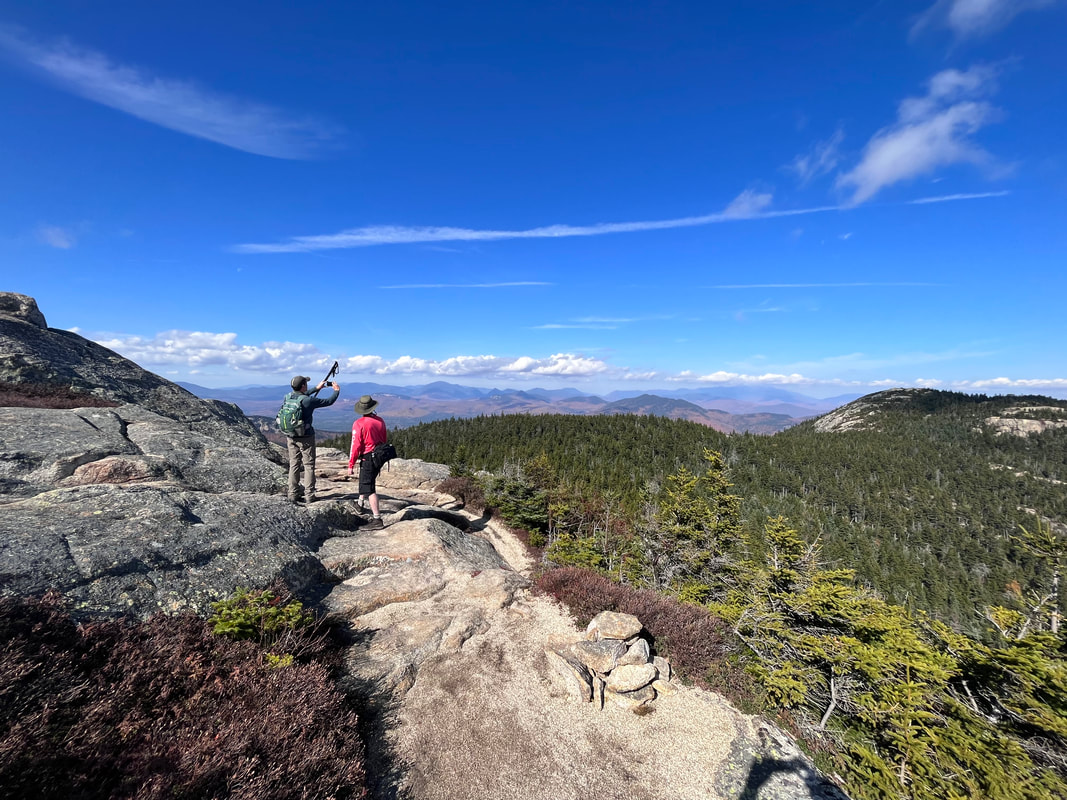
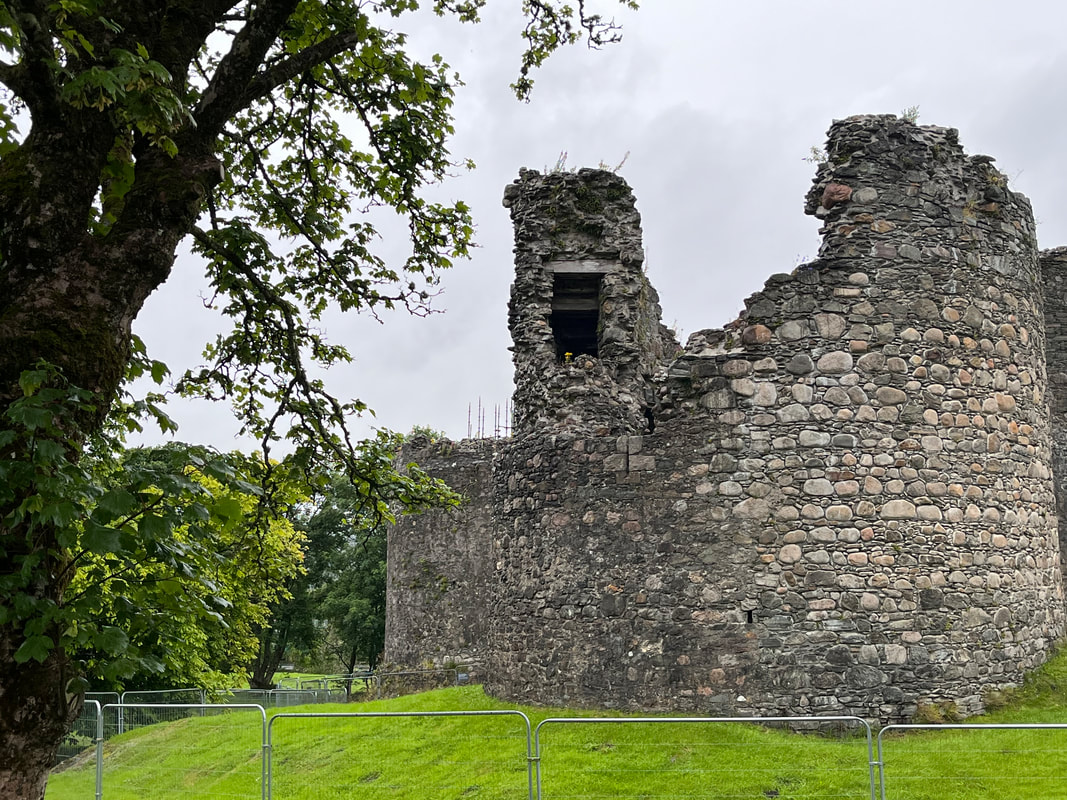
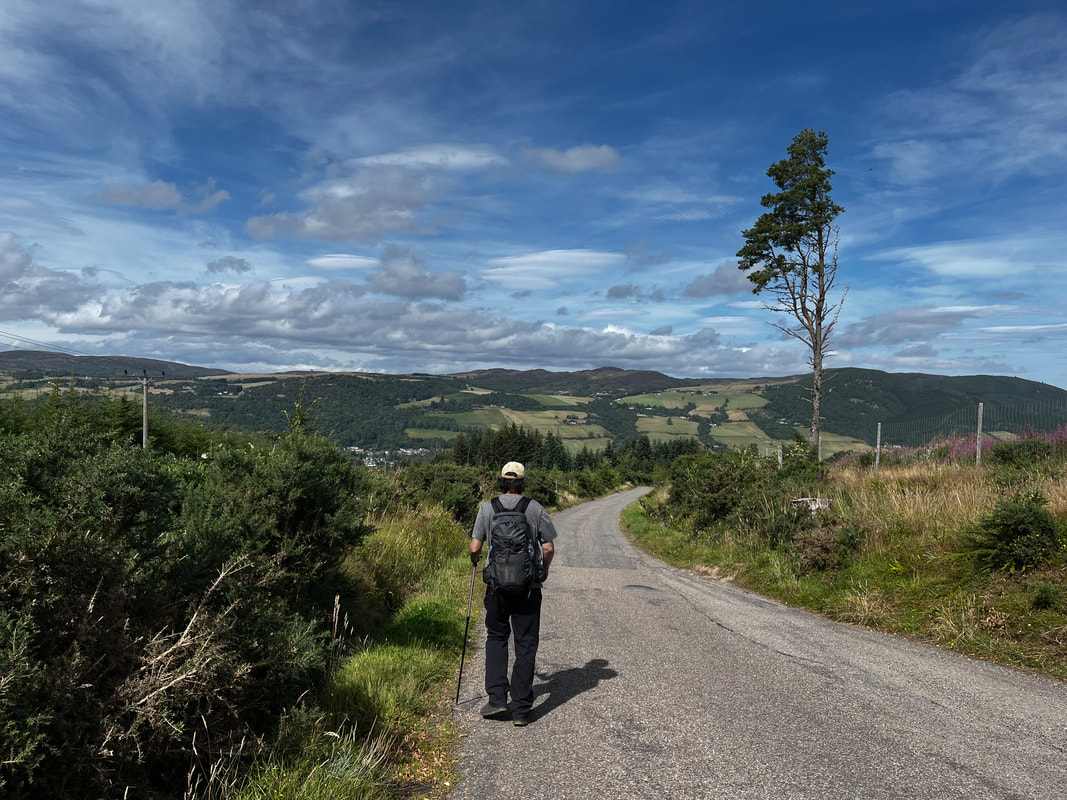
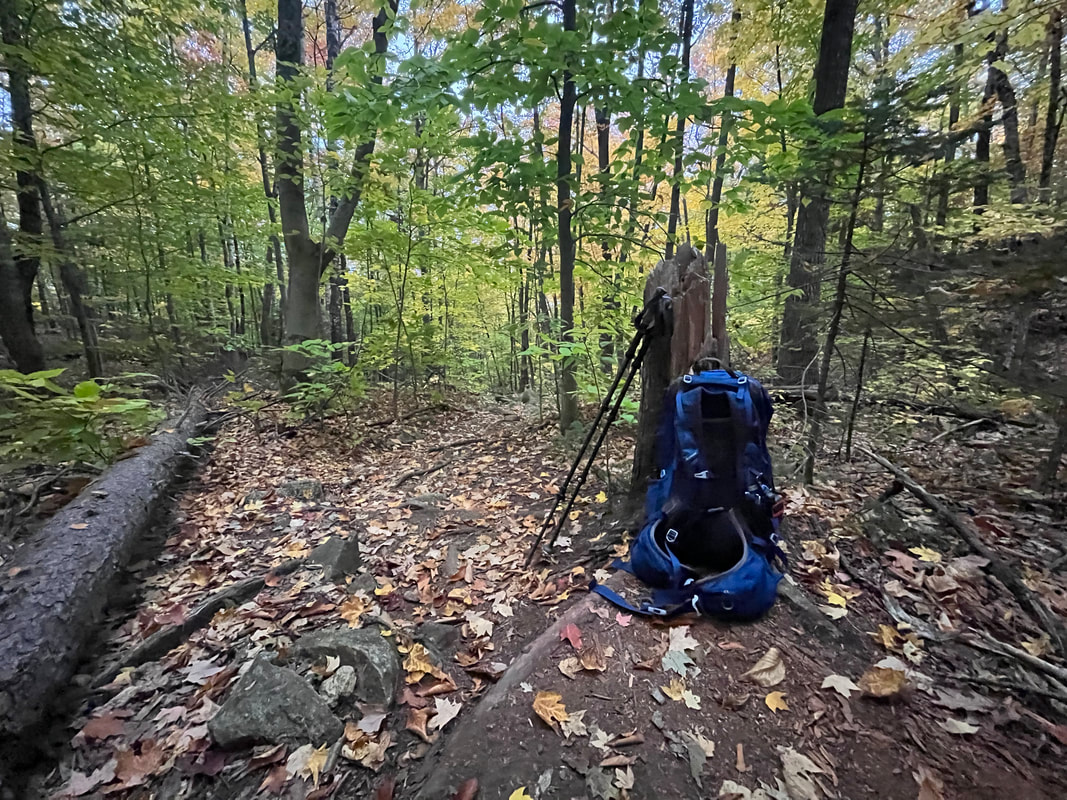
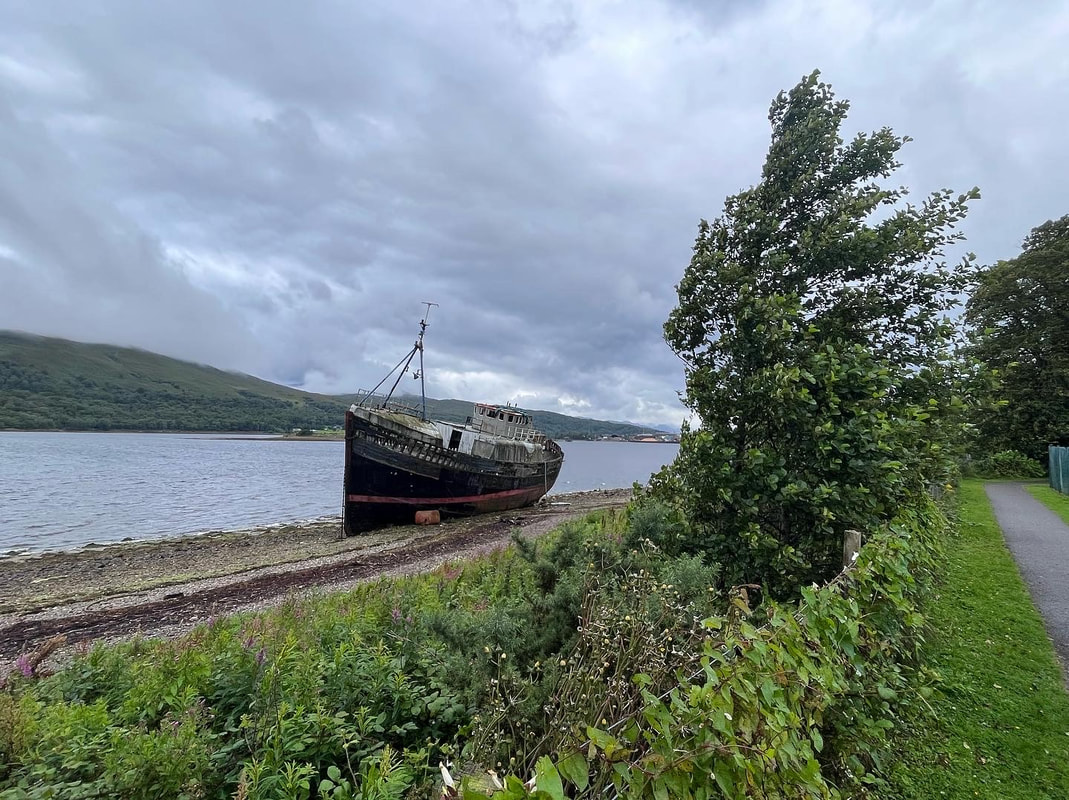
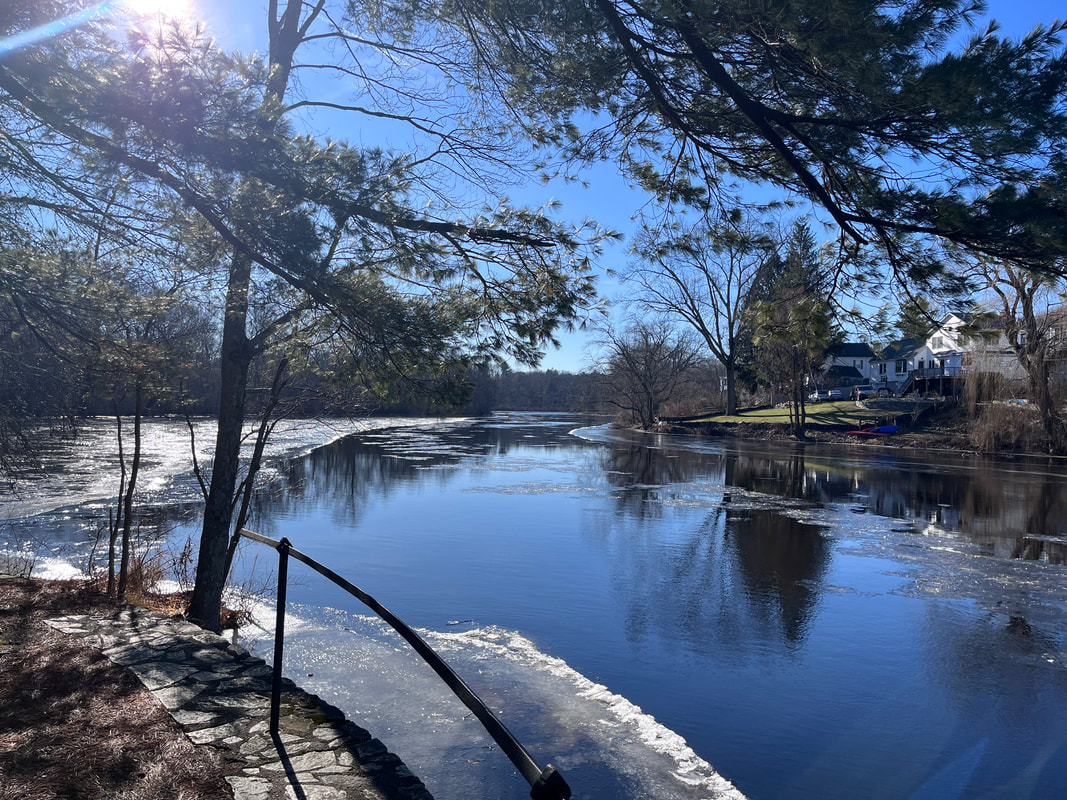
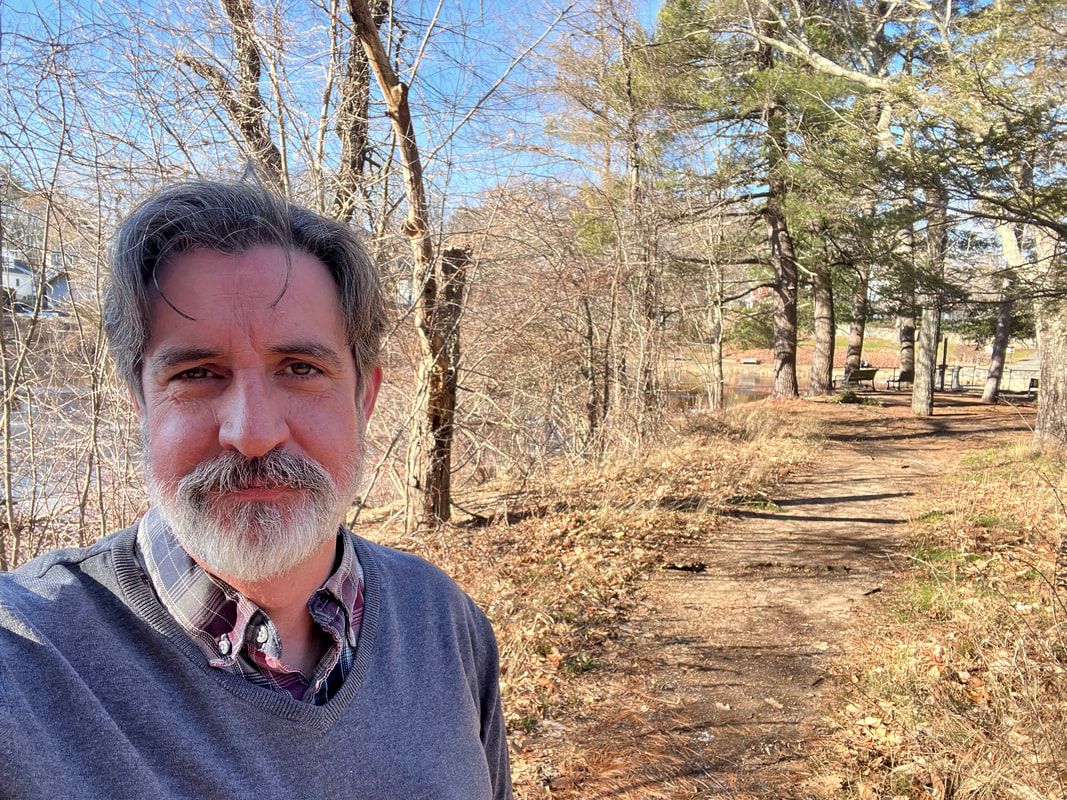
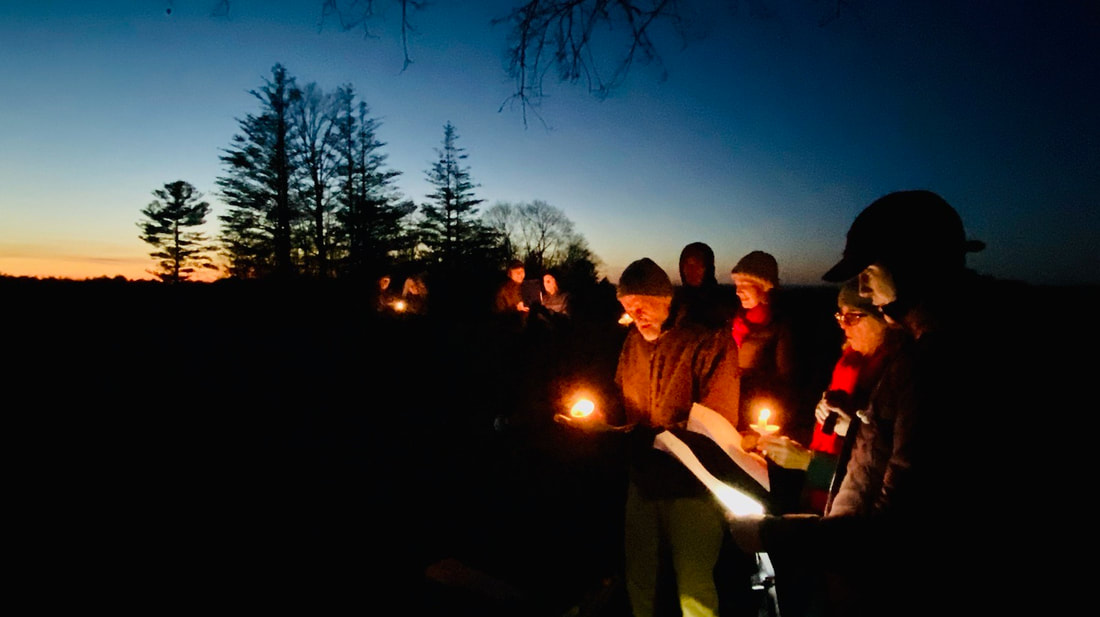
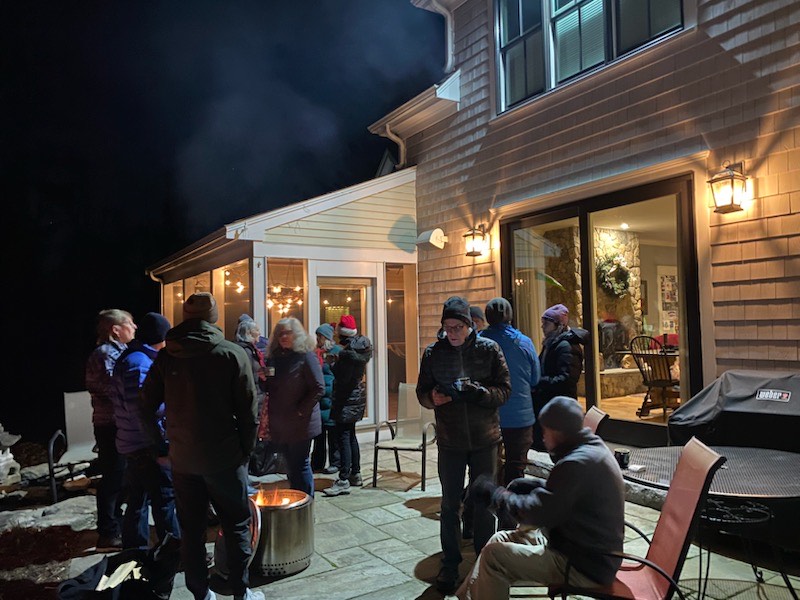
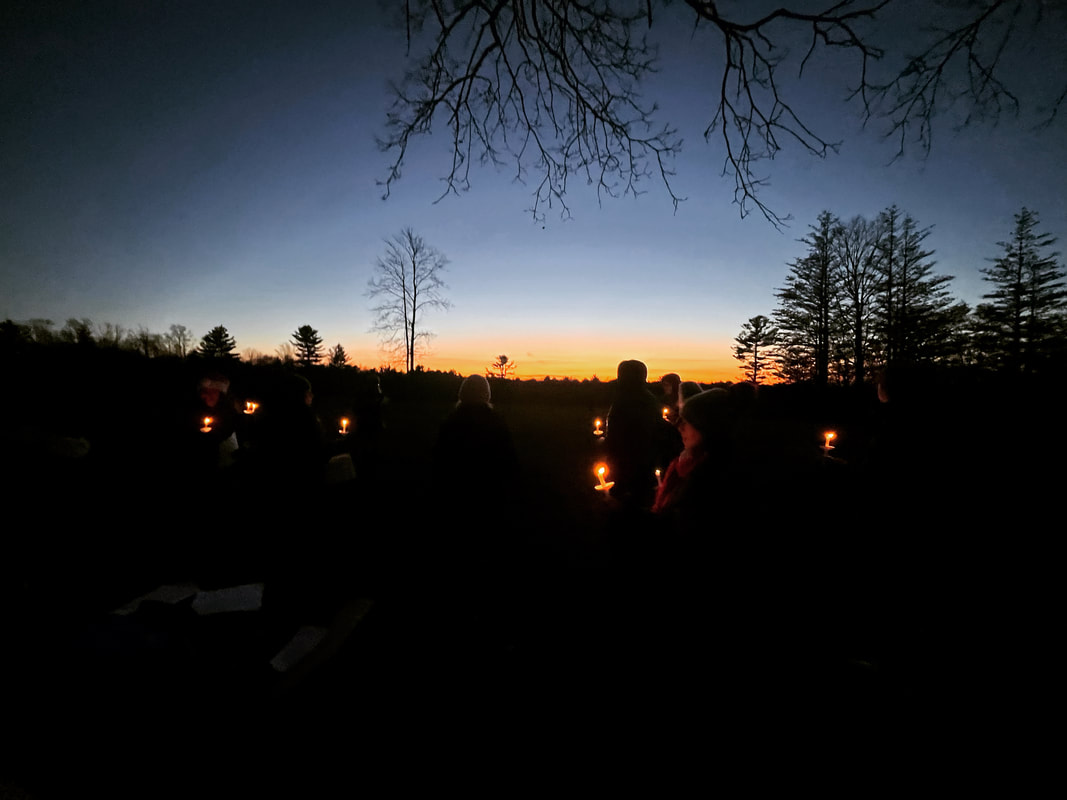
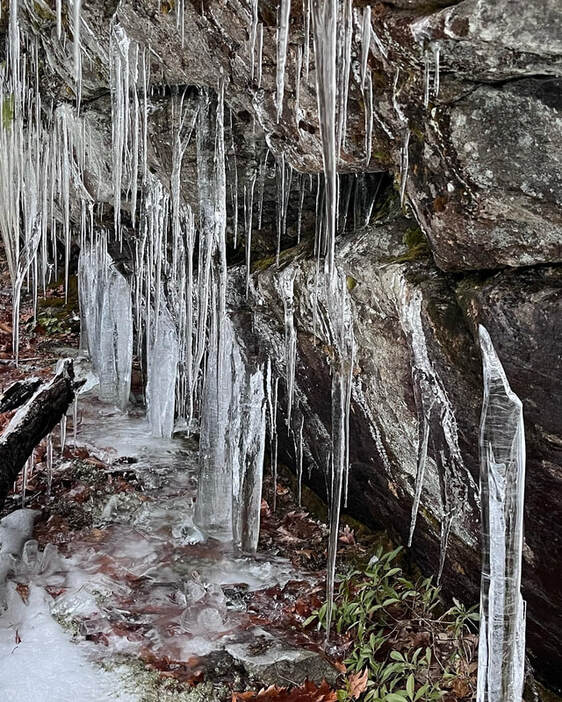
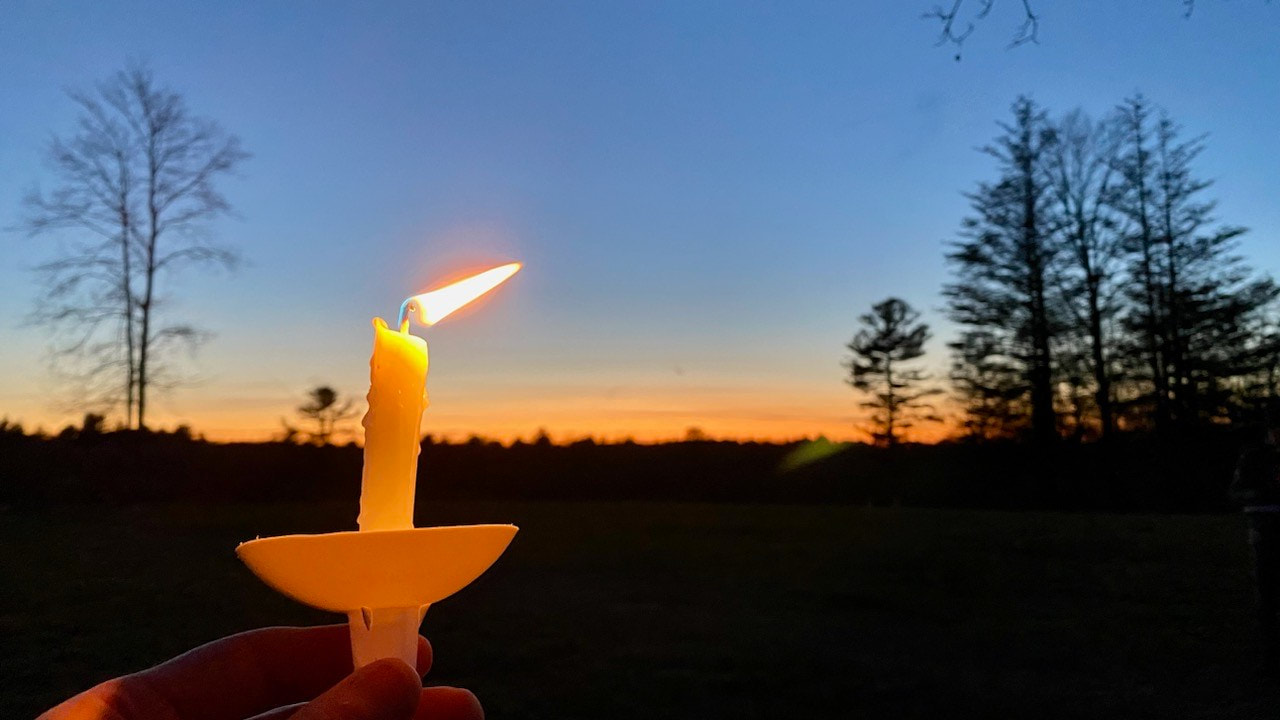
 RSS Feed
RSS Feed